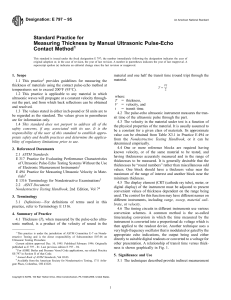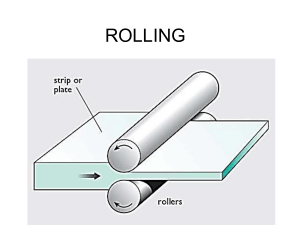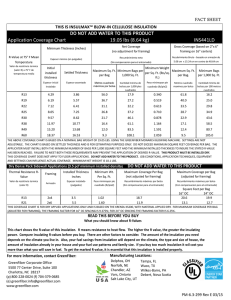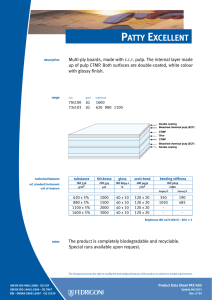Traceability of mass per unit area and composition of ZnNi
Anuncio
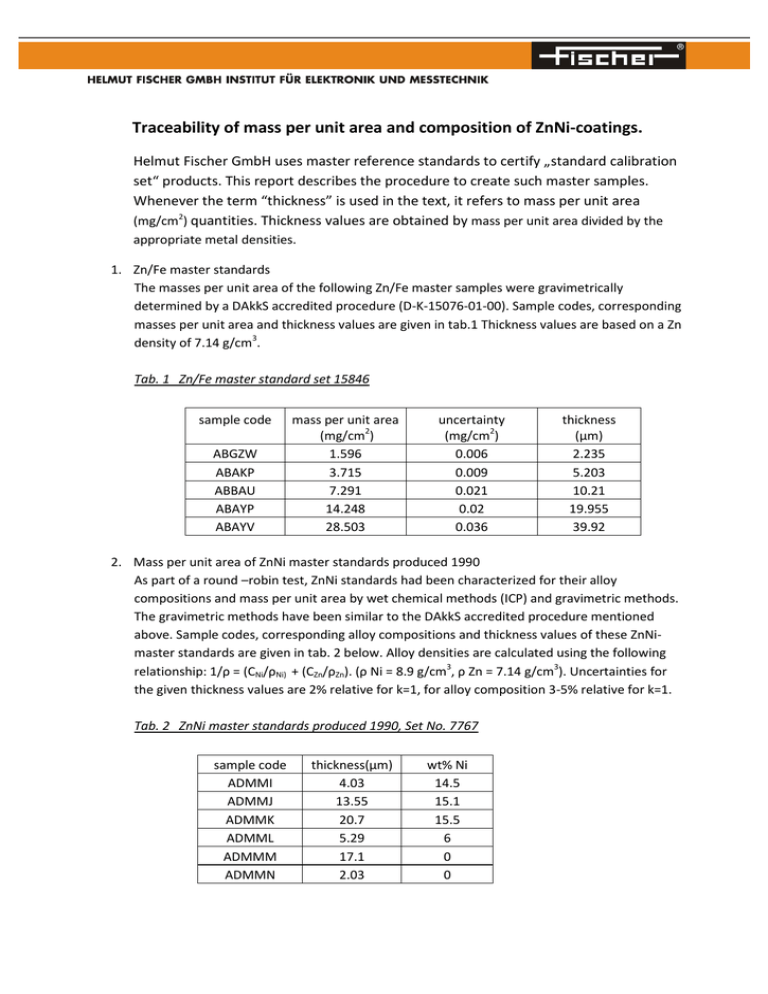
Traceability of mass per unit area and composition of ZnNi-coatings. Helmut Fischer GmbH uses master reference standards to certify „standard calibration set“ products. This report describes the procedure to create such master samples. Whenever the term “thickness” is used in the text, it refers to mass per unit area (mg/cm2) quantities. Thickness values are obtained by mass per unit area divided by the appropriate metal densities. 1. Zn/Fe master standards The masses per unit area of the following Zn/Fe master samples were gravimetrically determined by a DAkkS accredited procedure (D-K-15076-01-00). Sample codes, corresponding masses per unit area and thickness values are given in tab.1 Thickness values are based on a Zn density of 7.14 g/cm3. Tab. 1 Zn/Fe master standard set 15846 sample code ABGZW ABAKP ABBAU ABAYP ABAYV mass per unit area (mg/cm2) 1.596 3.715 7.291 14.248 28.503 uncertainty (mg/cm2) 0.006 0.009 0.021 0.02 0.036 thickness (µm) 2.235 5.203 10.21 19.955 39.92 2. Mass per unit area of ZnNi master standards produced 1990 As part of a round –robin test, ZnNi standards had been characterized for their alloy compositions and mass per unit area by wet chemical methods (ICP) and gravimetric methods. The gravimetric methods have been similar to the DAkkS accredited procedure mentioned above. Sample codes, corresponding alloy compositions and thickness values of these ZnNimaster standards are given in tab. 2 below. Alloy densities are calculated using the following relationship: 1/ρ = (CNi/ρNi) + (CZn/ρZn). (ρ Ni = 8.9 g/cm3, ρ Zn = 7.14 g/cm3). Uncertainties for the given thickness values are 2% relative for k=1, for alloy composition 3-5% relative for k=1. Tab. 2 ZnNi master standards produced 1990, Set No. 7767 sample code ADMMI ADMMJ ADMMK ADMML ADMMM ADMMN thickness(µm) 4.03 13.55 20.7 5.29 17.1 2.03 wt% Ni 14.5 15.1 15.5 6 0 0 3. ZnNi/Fe master standards produced 2011 In a similar fashion as 1990, two new ZnNi master standards were produced in 2011. Alloy compositions were obtained by dissolving alloy layers from metal sheets with well-known sizes. From the absolute amounts of Zn and Ni obtained by ICP analyses, masses per unit area, and with the assumed metal densities, thicknesses can be calculated. Results for the new ZnNi master standards are given in the tab.3 below. Uncertainties for thickness and composition are comparable to the values given above. Tab. 3 ZnNi master standards produced 2011 sample code thickness (µm) (calculated from mass per unit area and alloy density) ADMMO ADMMP alloy composition (wt%Ni) (by ICP) 8.54 17.14 15.9 15.3 4. Correlation of standard-free results with specified values The evaluation of the present ZnNi master standards confirms the values of the 30 years old master samples (!). On average, standard-free results are within 5% of the specified values for thickness and composition. The good correlations attest that these standards are not subject to alteration processes and can be used for long times. In addition, these correlations allow applying minor corrections to the old thickness- and composition values of the old master samples (tab.4). Thickness of ZnNi master standards std-free rsults (µm) 25 y = 1.043x 20 15 exp 10 exp, new grav 5 Linear (exp) 0 0 10 20 specified values (µm) 30 std-free results (wt% Ni) Ni wt% in ZnNi master standards 18 16 14 12 10 8 6 4 2 0 y = 1.0455x old new Linear (old) 0 5 10 15 20 specified values (wt%Ni) Tab.4 Corrected values of the current ZnNi master standards sample code ADMMI ADMMJ ADMMK ADMML ADMMM ADMMN ADMMO ADMMP W. Klöck, January 2012 thickness(µm) 4.13 14.19 21.19 5.03 16.78 1.99 8.74 17.07 uncertainty 0.08 0.28 0.42 0.1 0.34 0.04 0.17 0.34 wt% Ni 15.2 14.5 15.1 6.2 0 0 15.9 15.6 uncertainty 0.5 0.5 0.5 0.3 0 0 0.5 0.5

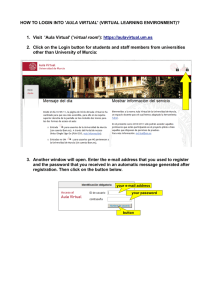
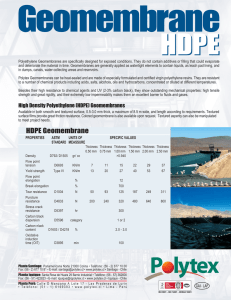
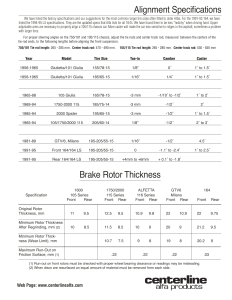

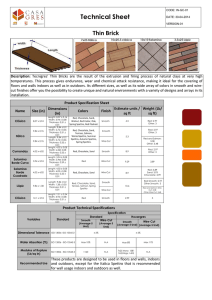
![[ Graphics Card- 710-1-SL]](http://s2.studylib.es/store/data/005308161_1-3d44ecb8407a561d085071135c866b6c-300x300.png)

